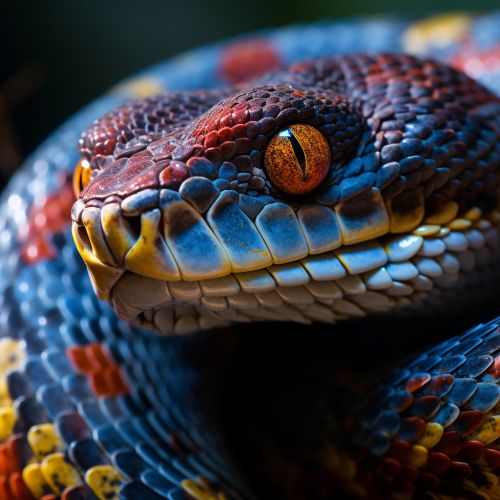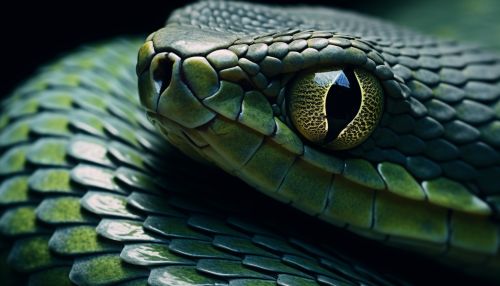Snakes
Classification and Evolution
Snakes are part of the reptile class, specifically within the order Squamata, which also includes lizards. They are further classified into the suborder Serpentes. There are approximately 3,600 known species of snakes, grouped into 20 families. The largest of these families are the Colubridae, Viperidae, and Elapidae.


The evolution of snakes is a subject of ongoing research and debate among scientists. The current consensus is that snakes descended from burrowing or aquatic lizards during the mid-Cretaceous period, approximately 100 million years ago. This is supported by fossil evidence, such as the discovery of the snake-like lizard, Najash rionegrina, which had hind legs but no forelimbs.
Anatomy and Physiology
Snakes have a highly specialized anatomy that allows them to swallow prey much larger than their head. Their lower jaws are divided into two halves, which are not rigidly attached, and numerous other joints in their skull allow it to accommodate large prey items.
Snakes are ectothermic, meaning they regulate their body temperature externally. They do this by basking in the sun to warm up or seeking shade to cool down. Some species also change their color to regulate their temperature, a phenomenon known as thermoregulation.
Behavior and Ecology
Snakes exhibit a wide range of behaviors and ecological adaptations. Some species are arboreal, living in trees, while others are fossorial, burrowing into the ground. There are also aquatic and semi-aquatic species. Snakes can be found in nearly every type of habitat, from deserts to rainforests, and on every continent except Antarctica.
Snakes are primarily carnivorous, feeding on a variety of prey including rodents, birds, other reptiles, and amphibians. Some larger species even consume small mammals. They employ a range of hunting strategies, from active hunting to ambush predation.
Venom and Bites
Many snake species are venomous, using their venom to immobilize or kill their prey before consuming it. The venom is delivered through specialized teeth called fangs. Snake venom is a complex mixture of proteins and enzymes, and its composition varies widely between species.
Snake bites can be dangerous to humans, but not all snakes are harmful. The World Health Organization estimates that between 4.5 and 5.4 million people are bitten by snakes each year, with 1.8 to 2.7 million of these cases resulting in envenoming.
Conservation
Many snake species are threatened by habitat loss, pollution, and climate change. Some are also targeted by the illegal pet trade. Conservation efforts for snakes include habitat preservation, laws against killing or collecting snakes, and captive breeding programs.
